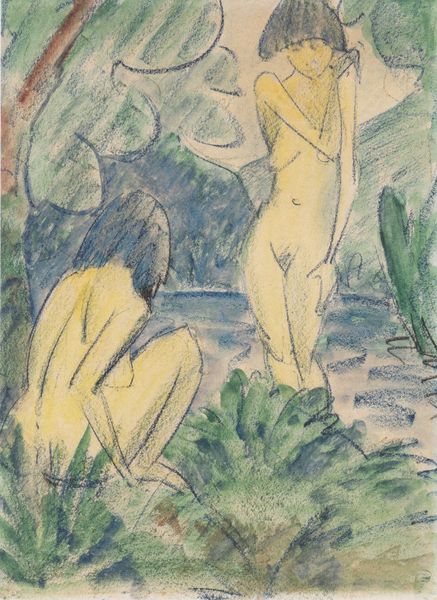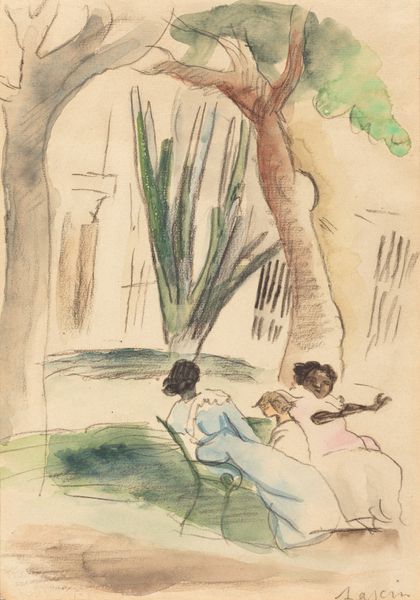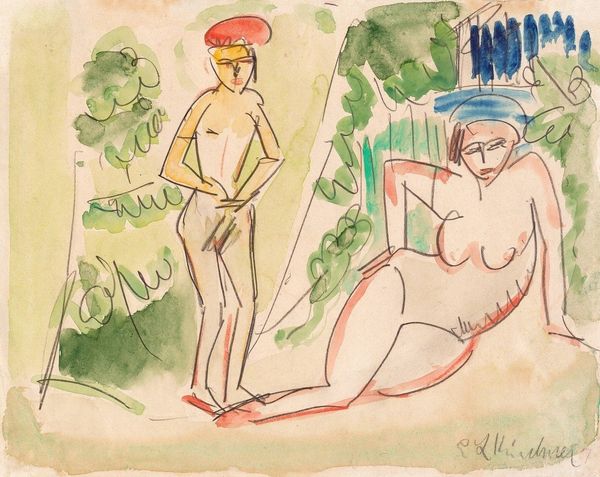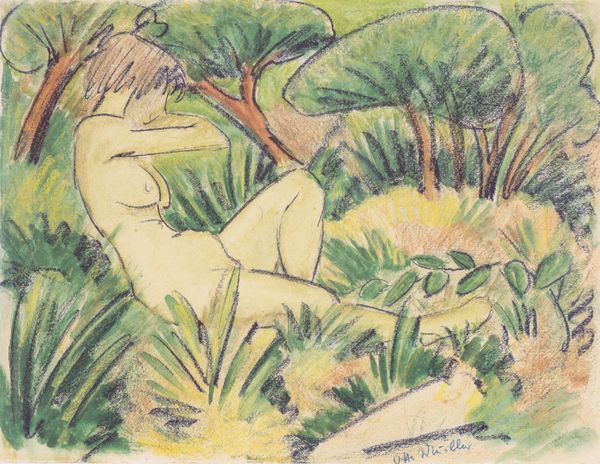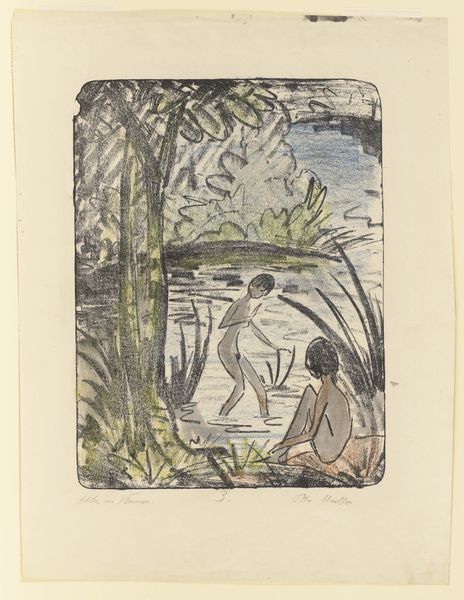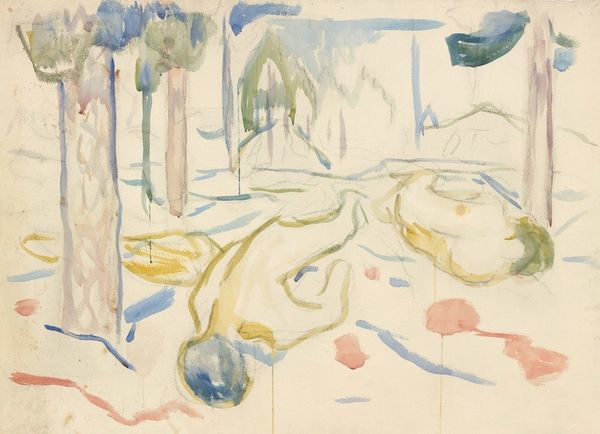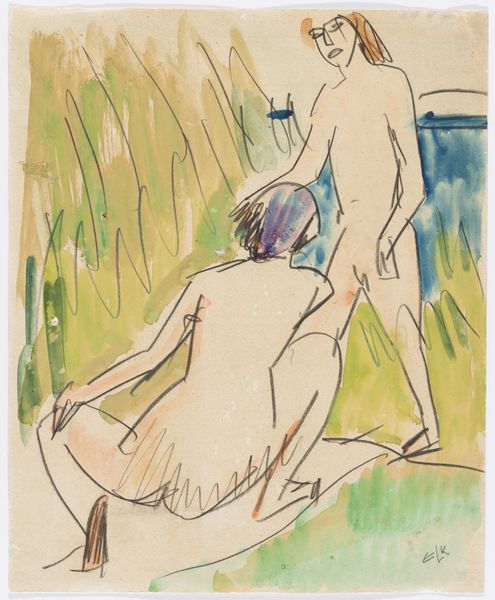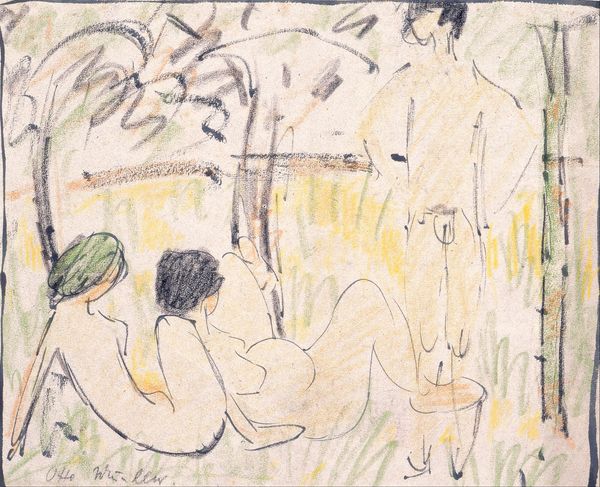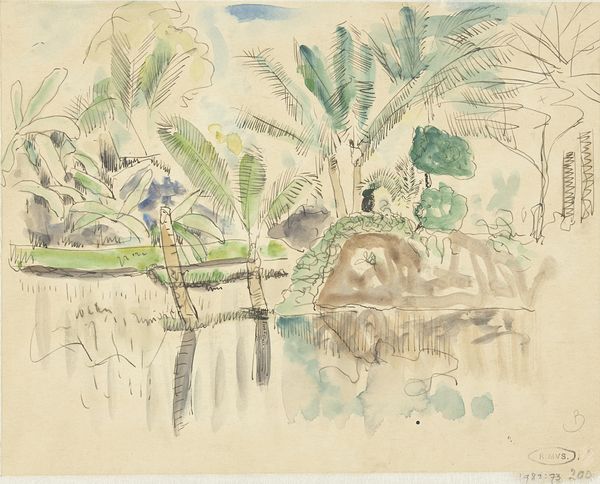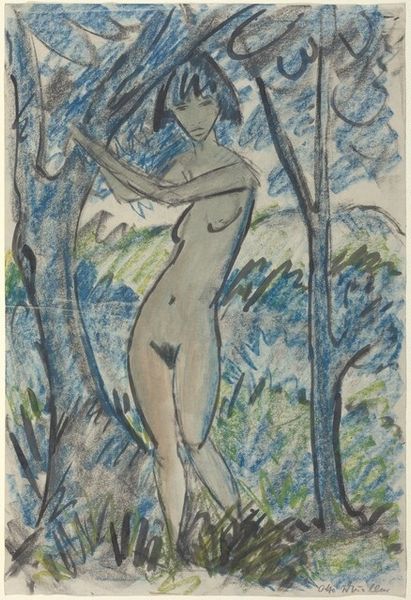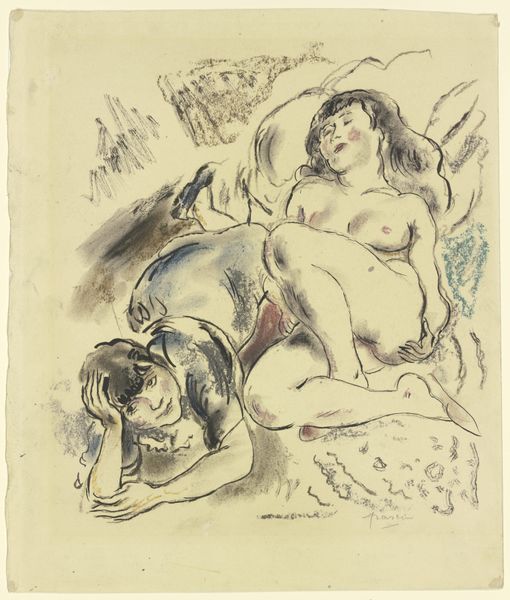
drawing, paper, watercolor
#
17_20th-century
#
drawing
#
water colours
#
ink painting
#
landscape
#
figuration
#
paper
#
watercolor
#
expressionism
#
line
#
nude
Copyright: Public Domain
Editor: This watercolor and ink drawing, possibly from 1907, is called "Bathers by the Lake" by Ernst Ludwig Kirchner. The scene is quite striking; the colors are vibrant yet somewhat jarring. What materials-related insights can we gain from studying this piece? Curator: What’s interesting is the seemingly hurried application of watercolor washes and ink. Notice how Kirchner doesn’t try to conceal the process. He’s almost flaunting the raw materials, foregrounding the making, pushing against the illusionistic tendencies of academic painting. What effect do you think this focus on materiality has on the viewer? Editor: It definitely makes it feel more immediate, more… honest, perhaps? Less concerned with idealization. So, it's not just about depicting a scene but also about revealing the artistic labor itself? Curator: Exactly. Consider the context. Kirchner was part of Die Brücke, a group deeply critical of bourgeois society and its values. By using cheap materials and emphasizing the process, he subverts the preciousness often associated with fine art, challenging traditional hierarchies of labor and artistic production. Where does that place it in relation to ‘high’ art, would you say? Editor: I see. So, the deliberate crudeness pushes back against established ideas of art as refined craftsmanship. But how does that link to the figures themselves, to the theme of bathing? Curator: Think about it. The subject—nudes in nature—could be read as escapist. But by rendering them in this deliberately unsentimental way, Kirchner avoids idealizing the figures, rooting them in a material reality. Are they free, or trapped by what is expected of them? Editor: So the artwork, with its frankness, acts as a critique of social norms around the body, representation, and artistic production itself. Fascinating. Curator: Indeed, it pushes us to examine not only what we see but how it's made and what that making signifies in its social and historical context.
Comments
No comments
Be the first to comment and join the conversation on the ultimate creative platform.
